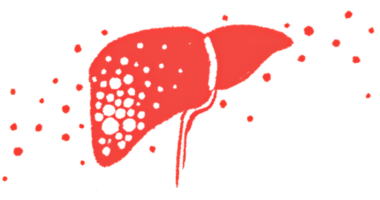FLT180a for hemophilia
Last updated Feb. 12, 2024, by Margarida Maia, PhD

What is FLT180a for hemophilia?
FLT180a, also known as verbrinacogene setparvovec, is an investigational gene therapy that was investigated as a treatment for people with hemophilia B.
The therapy was developed by Freeline Therapeutics, to be given as a one-time intravenous (into-the-vein) infusion. However, the the clinical development of FLT180a was paused in 2022 for strategic reasons, unless a partner could be found to move the gene therapy into Phase 3 testing.
Freeline was acquired by Syncona in 2023 and it remains unclear if there are plans to continue developing the therapy.
Therapy snapshot
| Treatment name: | FLT180a |
| Administration: | Intravenous infusion |
| Clinical testing: | Development paused after Phase 1/2 clinical trial |
How does FLT180a work in hemophilia?
Hemophilia B is caused by mutations in the F9 gene, which provides instructions for producing factor IX (FIX), a clotting protein in the blood. When FIX is faulty or missing, the blood cannot clot properly, meaning people with hemophilia B often have prolonged bleeding episodes in their joints and soft tissues that can be difficult to control.
FLT180a is an experimental gene therapy designed to deliver an optimized version of the F9 gene to liver cells. This version includes certain changes in the gene’s sequence that increase protein production and carries a Padua mutation, a point mutation that occurs naturally and makes an FIX protein with eight times greater clotting activity than the normal protein. This lets lower doses be delivered to achieve a similar therapeutic effect.
The working gene FLT180a is packaged inside a proprietary delivery vehicle called adeno-associated virus serotype S3 (AAVS3), which is harmless to humans and more effective at delivering its payload to liver cells, the main producers of blood clotting factors.
Once the gene is unloaded, liver cells can produce FIX on their own, which should increase FIX in the blood, helping to prevent and control bleeding episodes in people with hemophilia B.
How was FLT180a administered in hemophilia?
In clinical trials, FLT180a was administered as a single intravenous infusion at doses ranging from to 3.84×1011, or 3.84 hundred billion vector genomes per kilogram of body weight (vg/kg) to 1.28×1012, or 1.28 trillion.
FLT180a in hemophilia clinical trials
The safety and efficacy of FLT180a were tested in a Phase 1/2 clinical trial, called B-AMAZE (NCT03369444), which enrolled 10 men with moderately severe to severe hemophilia B, defined as FIX activity no greater than 2% of normal.
All the participants were given a single intravenous infusion at one of four doses, ranging from 3.84 hundred billion to 1.28 trillion vg/kg. They also received an immunosuppressive regimen (glucocorticoids with or without tacrolimus) to prevent an immune reaction against the viral vector.
A long-term follow-up study (NCT03641703) was launched to evaluate the therapy’s safety and effectiveness for up to 15 years in patients who’d completed the six months of treatment in B-AMAZE or who had participated in other FLT180a clinical trials. The trial was terminated early in 2023 due to a pause in FLT180a’s clinical development.
Available results showed a dose-dependent increase in FIX levels after 26 weeks, with one patient given the highest dose reaching a median of 280% of normal. These levels were sustained for the remainder of follow-up in all but one patient, remaining between 10.5 and 279% after a median follow-up of 27.2 months (about 2.3 years).
The only patient who failed to maintain high FIX levels initially had an increase in the enzyme to 47% of normal at week 5, but levels dropped to less than 2% after he had an increase in liver enzymes, at which point he resumed his routine prophylactic (preventive) replacement therapy to temporarily supply the missing FIX.
Among the 10 patients, the number of bleeding episodes per year was reduced from 2.93 to 0.71 after treatment with FLT180a. The use of FIX replacement therapies to prevent and control bleeds also decreased from 226,026 international units (IU) a year to a mean of 9,723 IU a year.
B-LIEVE Phase 1/2 trial
A dose-confirmation Phase 1/2 clinical trial, called B-LIEVE (NCT05164471), then enrolled six men with moderately severe to severe hemophilia B. The goal was to select the best dose of FLT180a for a future Phase 3 clinical trial.
The first three participants, ages 22-51, were given a single intravenous infusion at a dose of 7.7 hundred billion vg/kg. Preliminary data showed all achieved normal FIX levels more than a month after treatment with FLT180a, letting them stop their routine prophylactic replacement therapy.
B-LIEVE was also terminated early due to the pause in FLT180a’s clinical development.
Common side effects of FLT180a
The most common side effect related to FLT180a was an elevation of liver enzymes, a sign the liver may be damaged. Other side effects deemed related to treatment included fatigue or a feeling of general discomfort, muscle spasms or pain, indigestion, blood clotting issues, and headache.
Hemophilia News Today is strictly a news and information website about the disease. It does not provide medical advice, diagnosis or treatment. This content is not intended to be a substitute for professional medical advice, diagnosis, or treatment. Always seek the advice of your physician or other qualified health provider with any questions you may have regarding a medical condition. Never disregard professional medical advice or delay in seeking it because of something you have read on this website.
Recent Posts
- Liver rupture leads to hemophilia B diagnosis in newborn: Case report
- One woman’s path to a black belt — and hemophilia diagnosis
- Doctors warn eye bleeding can be first sign of hemophilia A
- I’m still learning how to ask for help ahead of an important surgery
- Gene therapy can help reduce joint bleeds in hemophilia B: New data
Related articles





